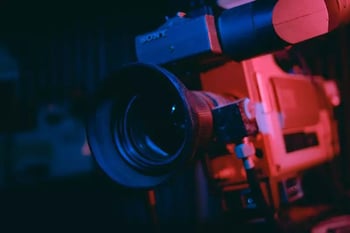Sound Design: The Hidden Craft of a Video Production Company
Discover the hidden craft of sound design in video production! Explore its importance, elements, techniques, and how it amplifies storytelling.
Whether you're an aspiring filmmaker or a seasoned veteran in the world of video production, you understand the visual language that is required to tell a compelling story. You've probably spent countless hours working on the perfect shot, adjusting the lighting to capture the right mood, or mastering your editing skills to stitch together an engaging narrative.
Yet, there is another equally important, often overlooked dimension to successful video production - sound design. We often take it for granted, but it's the often-unseen hero of any video piece. In this article, we will unravel the hidden craft of sound design and how it profoundly impacts the viewer's experience.
The Silent Storyteller
What makes sound design such an essential part of video production? First, let's think about sound as a silent storyteller. It's sound that gives depth to the visuals on the screen and enhances the emotional resonance of any video content.
Imagine watching your favorite film on mute. Even without the dialogue, the music, ambient noise, or sound effects, we can feel an unsettling emptiness, a void where the full story should reside. This experiment quickly reveals the power of sound to complement and even steer the narrative.
Take a documentary about wildlife, for instance. The roar of a lion or the chirping of birds is crucial to create an authentic atmosphere. Similarly, in a suspenseful drama, the eerie silence or sudden startling noises can build tension like nothing else.
The Art and Science of Sound Design
Sound design involves much more than just picking the right soundtrack. It's a complex process, encompassing a broad range of elements. Here's a basic rundown of these elements.
- Dialogue: It’s the spoken words between the characters. A sound designer's job is to ensure that the dialogue is clear, audible, and free from any background noise.
- Ambient Sounds: These are the background sounds that set the environment or mood of a scene, like the hum of a bustling city or the gentle rustling of leaves in a forest.
- Foley: Named after sound-effects artist Jack Foley, it refers to everyday sound effects that are added in post-production to enhance the audio quality of the video. The crunch of footsteps, the pouring of a drink, the slamming of a door — these are all examples of Foley sounds.
- Sound Effects (SFX): These are used to represent off-screen events or to emphasize on-screen actions, such as a car crash, a gunshot, or a ringing phone.
- Music: Music serves to underscore the emotion of a scene. It can create a sense of happiness, sadness, suspense, or excitement.
In the hands of a skilled sound designer, these elements are meticulously crafted, balanced, and blended to create a coherent and impactful sonic experience.
Sound Design Techniques
An expert sound designer employs a variety of techniques to create an immersive sonic world.
Layering is a popular technique, where multiple sounds are overlaid to create a complex audio mix. Think about a scene in a busy restaurant — the clinking of cutlery, murmuring of patrons, sizzling from the kitchen, and music playing softly in the background. Each sound layer adds a depth of realism to the scene.
Spatialization refers to the placement of sounds within a stereo or surround sound field to create a sense of space or direction. For example, a car whizzing past might start in one speaker and move across to the other to give the impression of motion.
Pitch shifting involves altering the pitch of a sound to change its character. Lower pitches can make a sound feel ominous or foreboding, while higher pitches can make it seem lighter or more comical.
Sound Design Software
To weave together these sounds into a harmonious soundscape, sound designers use advanced digital audio workstations (DAWs) such as Pro Tools, Logic Pro, and Ableton Live. These tools allow for precise control over every aspect of the audio — from volume and pitch, to equalization and spatialization.
These DAWs, coupled with a vast library of sound effects, and a good pair of ears, are all a sound designer needs to breathe life into a video production.
Final Thoughts
The process of creating compelling video content can be challenging and complex. While visuals are undeniably a critical part of any video, it’s the subtle craft of sound design that truly makes a video come alive. It enhances the story, evokes emotions, and immerses the viewer in the world you're creating.
So, the next time you embark on your video production journey, remember that what your audience hears is just as important as what they see. And while perfecting the art of sound design might require time and practice, the payoff in terms of enriched storytelling and viewer engagement is more than worth it.
The art of sound design is the hidden craft of a video production company. It's an essential skill for any serious videographer, and its mastery can transform your videos from good to great. So, keep those ears open, and happy filmmaking!
Written by Jonathan English CEO for Venture Videos — a full-service video production agency that specialises in producing creative videos & campaigns that get real results.





















